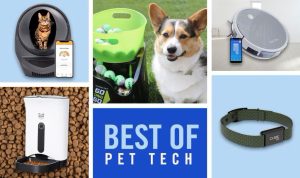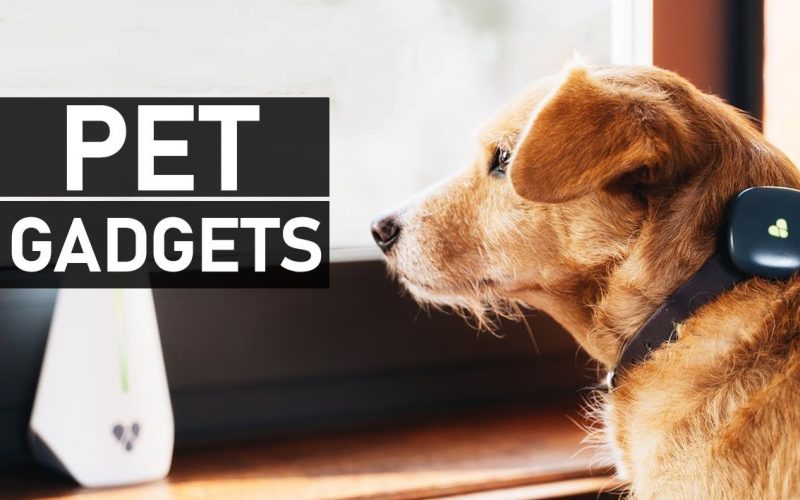Introduction
Pets are family, and 2025 brings new ways to keep them safe, healthy, and happy. Smart pet gadgets use technology to take animal care to the next level. From GPS trackers on collars to automatic feeders and health monitors, these connected devices let pet parent owners monitor and manage their pets even when apart. This article explores how animal care in 2025 is transforming. You’ll learn about leading connected pet devices, their benefits, and tips for choosing the right smart home device gadgets. Let’s dive into the world of smart pet tech and see how it can improve your pet’s life today.
What Are Smart Pet Gadgets?

Smart pet gadgets are electronic devices that connect to the internet or to each other to perform tasks for pet care. They use sensors, apps, and data to track, feed, entertain, and monitor pets. Rather than manual tools, these gadgets automate routine tasks and give real-time insights into your pet’s well-being. Common examples include GPS pet trackers, automatic pet feeders, pet health monitors, smart collars, and interactive pet toys. Each gadget solves a specific pet care challenge, from preventing lost pets to ensuring proper nutrition and peace of mind.
Why Smart Pet Gadgets Matter in 2025

By 2025, busy schedules and remote work have changed how we care for pets. Smart gadgets fill gaps when owners can’t be at home all day. They reduce stress for pets and owners by providing consistency and security. For example, a GPS pet tracker for furry friend instantly locates a dog that wanders off. An automatic pet feeder dispenses precise meal portions on schedule. A pet health monitor alerts you to changes in activity or sleep patterns. Smart gadgets empower owners with data and control, leading to better animal care in 2025.
Key Smart Pet Gadgets in 2025

1. GPS Pet Trackers
Modern GPS pet trackers are small devices attached to your pet’s collar. They use GPS and cellular networks to provide real-time location data to your smartphone. Features include live tracking, geofencing, and activity logs. Some models also measure speed and distance traveled, so you can review your pet’s daily exercise.
2. Automatic Pet Feeders
Automatic pet feeders dispense food on a set schedule. Advanced models allow portion control and meal planning via an app. Some units include cameras so you can watch your pet eat. A reliable feeder prevents overeating and obesity, and it ensures your pet never misses a meal.
3. Pet Health Monitors
Pet health monitors are wearable devices often in collar or tag form that track your pet’s vital signs. They measure heart rate, respiratory rate, and activity levels. Data syncs to an app, producing health reports and alerts if values fall outside normal ranges. Vets can use this data for remote consultations.
4. Smart Collars
Smart collars combine GPS tracking with health monitoring and LED lights for visibility at night. They may feature built-in microphones to capture noise levels, so you know if your pet barks excessively. Advanced collars can even administer medication or adjust tightly on command to prevent escape.
5. Interactive Pet Toys
Interactive pet toys keep pets mentally sharp. These include treat-dispensing puzzles, automatic laser pointers, and smart balls that move unpredictably. Controlled via an app or AI, these toys adapt to your pet’s play style, ensuring fun and exercise when you’re away.
Tips for Choosing the Right Smart Pet Gadgets

When selecting smart gadgets, consider these tips:
- Compatibility: Ensure devices work with your smartphone’s operating system (iOS/Android).
- Battery Life: Look for gadgets with long battery life—at least one week for trackers and monitors.
- Durability: Pets play rough, so choose water-resistant and shockproof devices.
- Data Privacy: Verify that the manufacturer follows strong data security practices.
- Ease of Use: Choose gadgets with intuitive apps and straightforward setup.
Testing a gadget for a short period can help you decide if it suits your pet’s behavior and your routine.
Challenges of Using Smart Pet Gadgets
Even with many perks, smart pet gadgets face hurdles. Upfront costs can be high, putting some devices out of reach for budget-minded owners. Many gadgets rely on Wi-Fi, so spotty home networks can cause missed feedings or lost data. Batteries need regular charging or replacement, or devices can go offline without warning. Some pets may take time to adjust to new equipment—scared cats or chewer-minded dogs can damage sensors or cords. Finally, privacy concerns arise when cameras and microphones are always on, requiring secure apps and user vigilance to protect home networks.
Future Trends in Smart Pet Technology

Looking ahead, we expect:
- AI-Driven Behavior Analysis: Gadgets will predict mood and health issues from subtle changes in movement or sound.
- Telehealth Integration: Direct syncing of health monitor data with veterinary telemedicine platforms for remote care.
- Smart Home Integration: Pet gadgets that sync with home assistants (Alexa, Google Home) for voice commands.
- Biometric Health Scans: Non-invasive sensors that measure hydration and stress levels.
These innovations will make animal care in 2025 even more proactive and personalized.
Comparative Table: Top Smart Pet Gadgets of 2025
| Gadget Type | Key Feature | Best For | Price Range |
|---|---|---|---|
| GPS Pet Trackers | Real-time location, geofencing | Outdoor dogs | $50–$150 |
| Automatic Pet Feeders | App-based portion control | Busy pet owners | $80–$250 |
| Pet Health Monitors | Vital signs, activity logs | Senior or ill pets | $100–$200 |
| Smart Collars | GPS + health + LED lights | Night-time walkers | $70–$180 |
| Interactive Pet Toys | AI-driven play patterns | High-energy pets | $30–$100 |
Conclusion
Smart pet gadgets are revolutionizing animal care in 2025 by offering safety, health insights, and enrichment. From GPS pet trackers and pet cameras that prevent lost pets to automatic pet smart feeders that manage diet and litter boxes that prevent toxicity, these connected pet devices enhance overall health and well-being and ease owners’ minds. Pet health monitors, smart collars, and interactive pet toys further support physical and mental health. By choosing the right gadgets—considering compatibility, durability, and pet type—you can create a fully connected care routine that keeps your pet happy, healthy, and secure.












